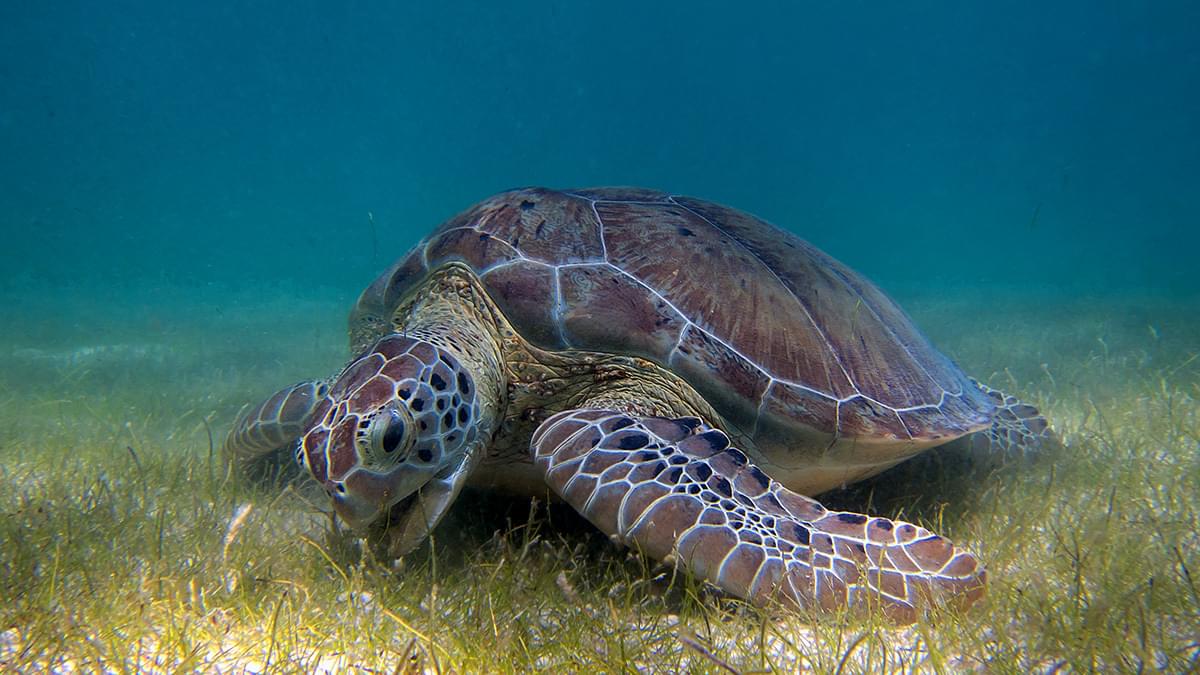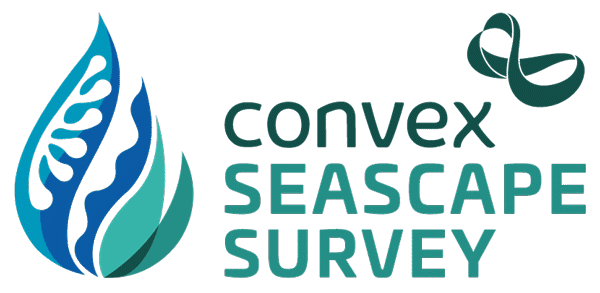

What’s the ocean got to do with climate?
Can't make the live broadcast? No problem! The lesson will be available on catch-up, and your class can still submit questions in advance for our experts to address.
Join thousands of students around the world as your class takes part in COP30’s Virtual Ocean Pavilion, connecting directly to the UN climate talks in Brazil. Together with an expert scientist, we’ll uncover the hidden relationship between the ocean and climate change — and why it’s impossible to understand one without the other.
The journey begins by revisiting the carbon cycle — this time with the ocean firmly in the picture — before exploring where carbon is stored across the Earth system and how these stores have shifted. Along the way, students will discover the paradox of the ocean as both victim and solution: warming waters and acidification threaten life, yet blue carbon habitats and deep marine sediments reveal the ocean’s extraordinary power to help.
The lesson closes with a call to action — to study, protect, and restore our blue ally — and the reminder that science is what guides and focuses those efforts.
Available on catch-up
- 45 mins
- Ages 12+ / KS3+
This live lesson will be Broadcast via YouTube Live
Preparation
This is a standalone lesson as part of the Virtual Ocean Pavilion at COP30 Amazonia. No specific preparation is needed but teachers may wish to view some of the resources from the Convex Seascape Survey. The Student Sheet Ocean and climate impacts should be downloaded to support section 4 of the lesson.
If you have never joined a live lesson before, visit the support centre, where you can find a range of technical and educational information.
Questions generated by your class can be submitted via the interaction app that will appear on this lesson page once you have booked the lesson.
Lesson steps
1. Welcome from COP30’s Virtual Ocean Pavilion (3 minutes)
We begin this live lesson from the Virtual Ocean Pavilion at COP30 in Brazil. Our guest speaker introduces themselves and the work of the Convex Seascape Survey.
2. The Ocean and the Carbon Cycle (6 minutes)
Our guest speaker will then take us through the basics of the carbon cycle, which is included in most of the textbooks and then expand this to include the ocean and important processes. Interactive diagrams linked in the supporting resources can be used to consolidate learning. Specific ocean processes that will be referenced include: exchange (release and absorption), ocean circulation, sedimentation, and run-off.
3. Where is all the carbon? (6 minutes)
The carbon cycle tells us how carbon moves around the Earth’s system, and this next section looks at where all the carbon is stored. Students are asked to rank the different carbon stores, such as the atmosphere and vegetation, in order of their size. Once the answers and revealed, our guest speaker will share how these stores have changed since about 1750, the start of the Industrial Revolution.
4. Why does this matter for the ocean? (6 minutes)
The ocean absorbs significant amounts of the excess heat and carbon dioxide generated by human activities. This has knock-on impacts on the ocean from sea level rise to coral bleaching. Classes are invited to reflect on the different impacts (a Student Sheet is included in the supporting resources to aid this), and then decide which they feel is the most important to them and share this in a poll.
5. How can the ocean help? (6 minutes)
In this last learning section, we look at the two main approaches to tackling climate change: nature-based solutions and decarbonisation. Our guest speaker will remind students about how natural systems draw down carbon and store it for long periods. A quick poll compares the effectiveness of different habitats in storing carbon. The lesson then looks at the importance of blue carbon habitats and ends by asking students where international efforts should be prioritised.
6. Wrap-up (3 minutes)
The lesson ends with a short recap of the journey: the ocean’s central role in the carbon cycle, its vulnerability to climate change, and its potential as an ally in addressing it. Students are reminded that protecting the ocean is not just about saving ecosystems but about safeguarding the future of people everywhere. The call to action is simple: study, protect, restore.
7. Q&A (10–15 minutes)
The final part of the session opens the floor to students’ questions. This is their chance to ask about the science they have just learned, about careers in ocean and climate research, and about the role young people can play in tackling the climate crisis.
Brought to you by

Part of

In partnership with



Teach the goals
What’s the ocean got to do with climate?
Can't make the live broadcast? No problem! The lesson will be available on catch-up, and your class can still submit questions in advance for our experts to address.
Join thousands of students around the world as your class takes part in COP30’s Virtual Ocean Pavilion, connecting directly to the UN climate talks in Brazil. Together with an expert scientist, we’ll uncover the hidden relationship between the ocean and climate change — and why it’s impossible to understand one without the other.
The journey begins by revisiting the carbon cycle — this time with the ocean firmly in the picture — before exploring where carbon is stored across the Earth system and how these stores have shifted. Along the way, students will discover the paradox of the ocean as both victim and solution: warming waters and acidification threaten life, yet blue carbon habitats and deep marine sediments reveal the ocean’s extraordinary power to help.
The lesson closes with a call to action — to study, protect, and restore our blue ally — and the reminder that science is what guides and focuses those efforts.
Available on catch-up
- 45 mins
- Ages 12+ / KS3+
This live lesson will be Broadcast via YouTube Live
Preparation
This is a standalone lesson as part of the Virtual Ocean Pavilion at COP30 Amazonia. No specific preparation is needed but teachers may wish to view some of the resources from the Convex Seascape Survey. The Student Sheet Ocean and climate impacts should be downloaded to support section 4 of the lesson.
If you have never joined a live lesson before, visit the support centre, where you can find a range of technical and educational information.
Questions generated by your class can be submitted via the interaction app that will appear on this lesson page once you have booked the lesson.
Lesson steps
1. Welcome from COP30’s Virtual Ocean Pavilion (3 minutes)
We begin this live lesson from the Virtual Ocean Pavilion at COP30 in Brazil. Our guest speaker introduces themselves and the work of the Convex Seascape Survey.
2. The Ocean and the Carbon Cycle (6 minutes)
Our guest speaker will then take us through the basics of the carbon cycle, which is included in most of the textbooks and then expand this to include the ocean and important processes. Interactive diagrams linked in the supporting resources can be used to consolidate learning. Specific ocean processes that will be referenced include: exchange (release and absorption), ocean circulation, sedimentation, and run-off.
3. Where is all the carbon? (6 minutes)
The carbon cycle tells us how carbon moves around the Earth’s system, and this next section looks at where all the carbon is stored. Students are asked to rank the different carbon stores, such as the atmosphere and vegetation, in order of their size. Once the answers and revealed, our guest speaker will share how these stores have changed since about 1750, the start of the Industrial Revolution.
4. Why does this matter for the ocean? (6 minutes)
The ocean absorbs significant amounts of the excess heat and carbon dioxide generated by human activities. This has knock-on impacts on the ocean from sea level rise to coral bleaching. Classes are invited to reflect on the different impacts (a Student Sheet is included in the supporting resources to aid this), and then decide which they feel is the most important to them and share this in a poll.
5. How can the ocean help? (6 minutes)
In this last learning section, we look at the two main approaches to tackling climate change: nature-based solutions and decarbonisation. Our guest speaker will remind students about how natural systems draw down carbon and store it for long periods. A quick poll compares the effectiveness of different habitats in storing carbon. The lesson then looks at the importance of blue carbon habitats and ends by asking students where international efforts should be prioritised.
6. Wrap-up (3 minutes)
The lesson ends with a short recap of the journey: the ocean’s central role in the carbon cycle, its vulnerability to climate change, and its potential as an ally in addressing it. Students are reminded that protecting the ocean is not just about saving ecosystems but about safeguarding the future of people everywhere. The call to action is simple: study, protect, restore.
7. Q&A (10–15 minutes)
The final part of the session opens the floor to students’ questions. This is their chance to ask about the science they have just learned, about careers in ocean and climate research, and about the role young people can play in tackling the climate crisis.
Brought to you by

Part of

In partnership with



Teach the goals